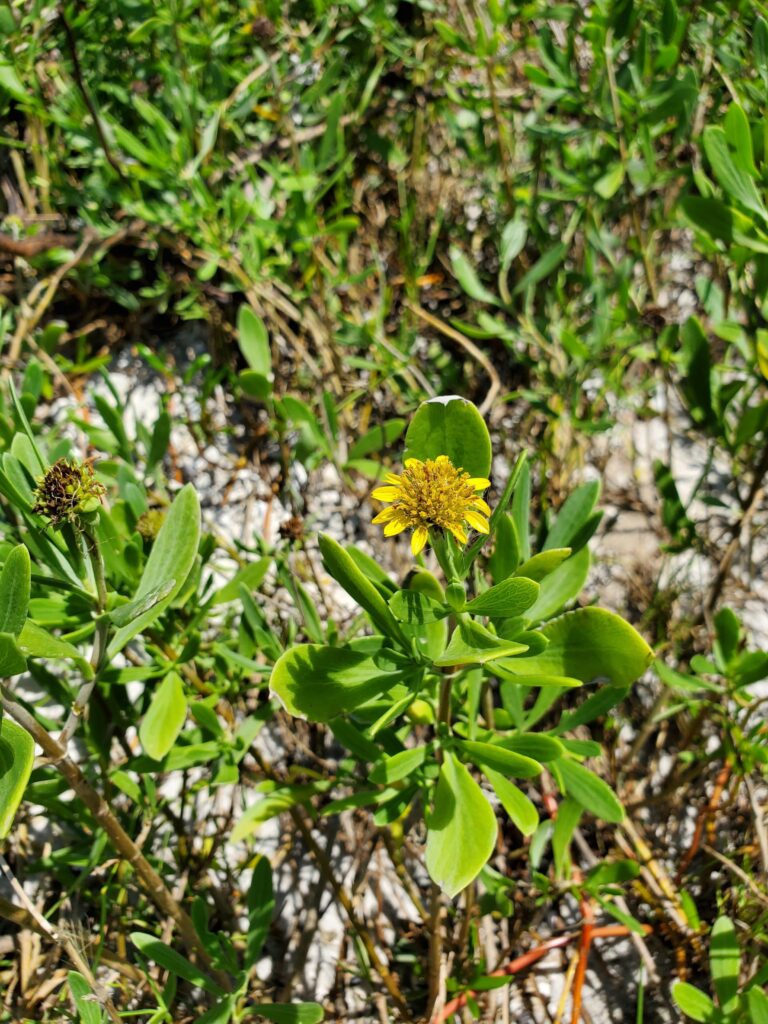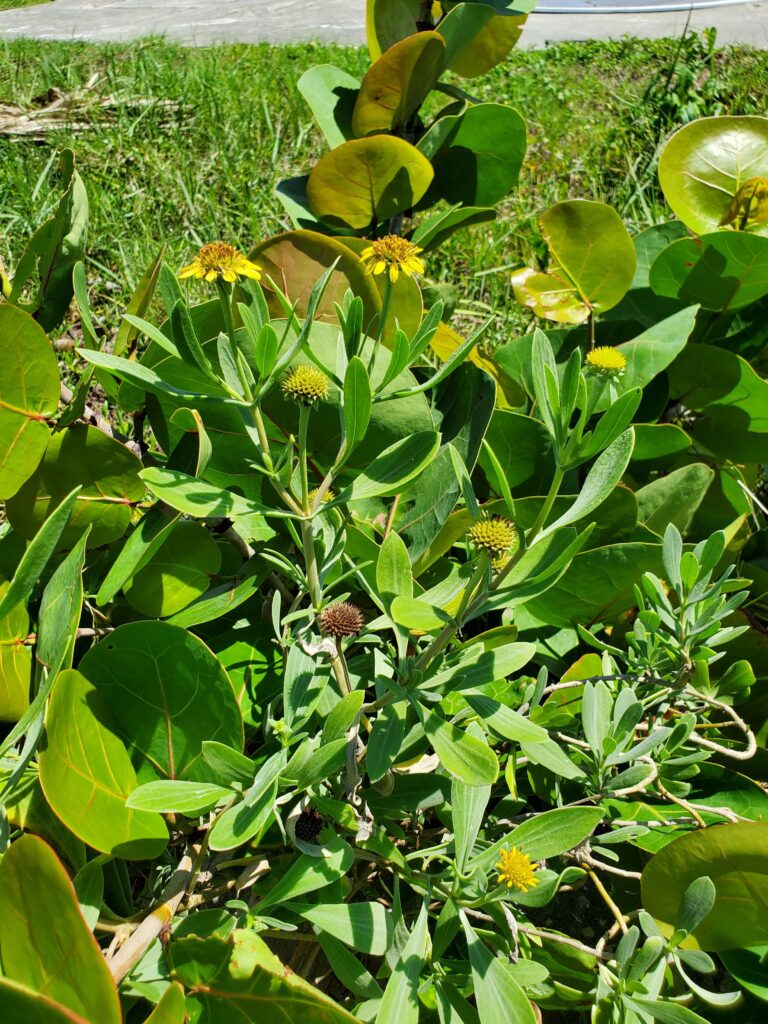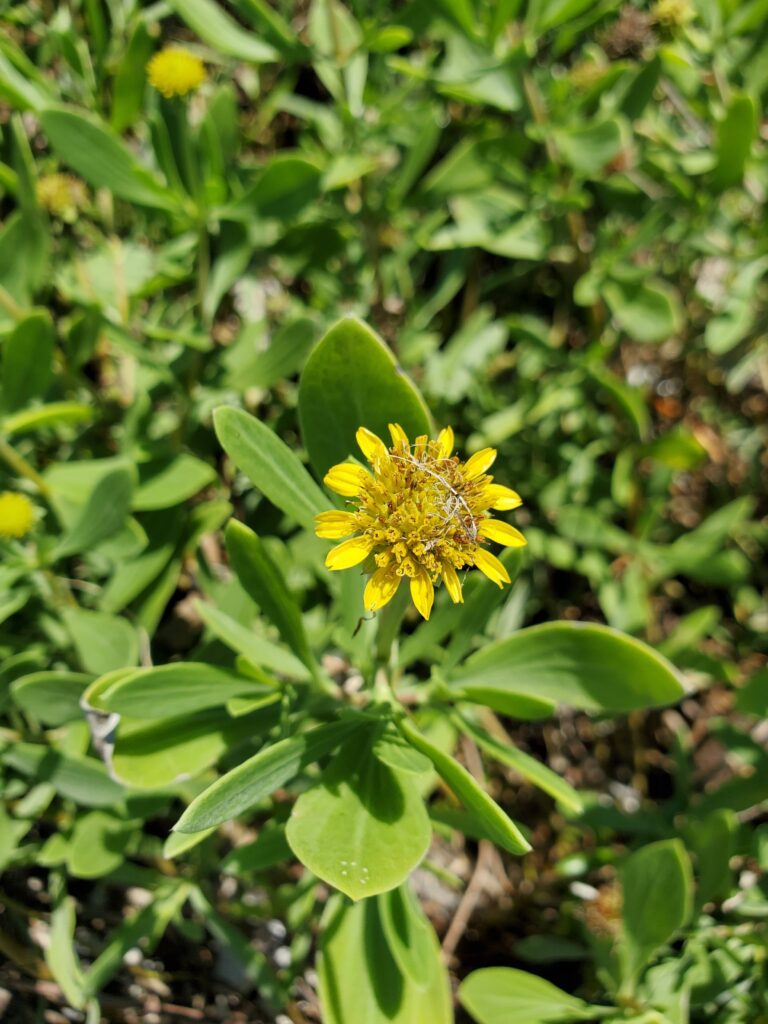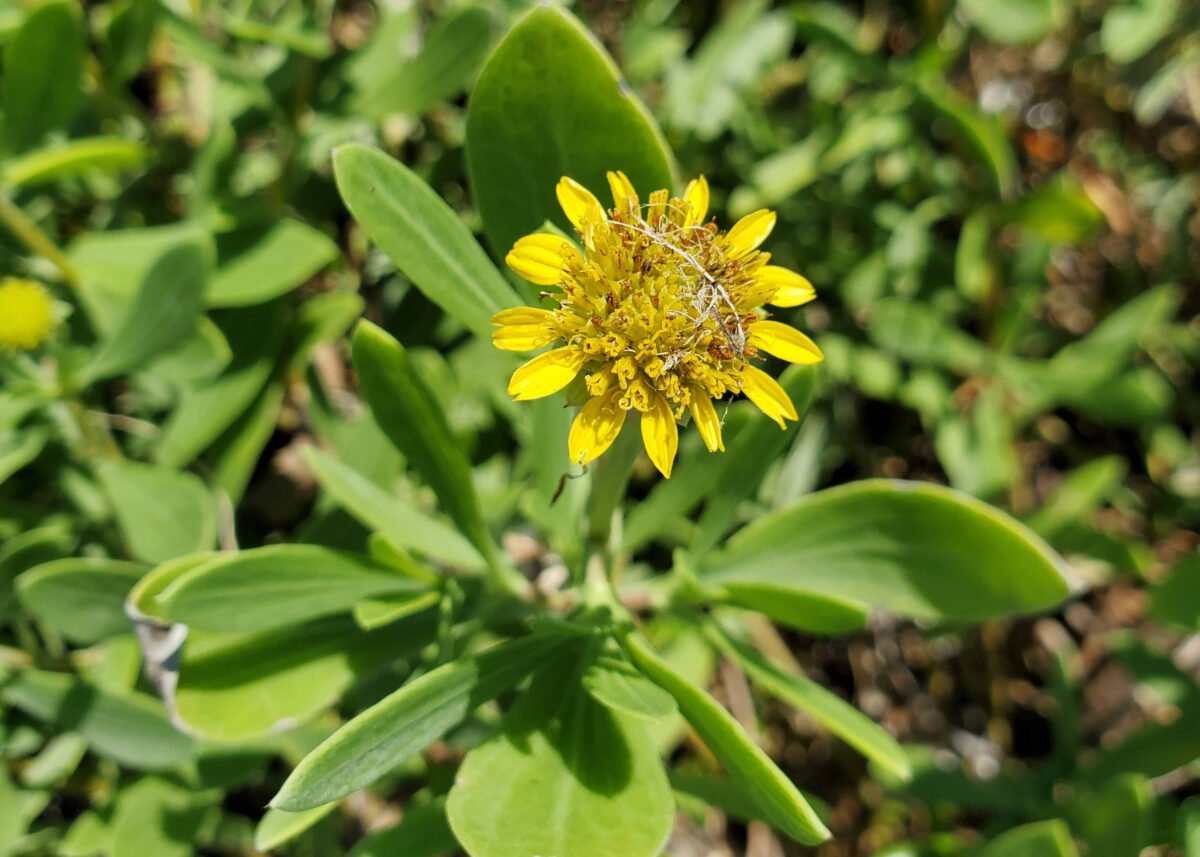Scientific name: Borrichia frutescens
Other common names: Sea oxeye daisy, sea daisy, bushy seaside tansy, sea-marigold.
Sea Oxeye is a perennial shrub that thrives in saline or salty conditions (also known as halophilous) and is mostly native to the salt marshes of the northern Caribbean basin (the southeastern U.S.A. & Mexico).1
Identification



The name Borrichia was used to honor 17th century Danish botanist Ole Borch .2 Meanwhile, frutescens is derived from the Latin frutico, which means “to become shrubby.”
Sea oxeye often grows alongside other salt-tolerant plants and is part of the aster family. For example, in the images included it can be seen growing alongside sea grape. As its name suggests, it grows like a shrub and can grow to be about 3 feet tall. The leaves appear succulent-like or fleshy (sort of like aloe, without the serrated sides). The leaves are a grey-green color and oval. They can appear hairy. The flowers are yellow and look like small daisies. There is usually one single flower on the end of a main stem.
To distinguish it from B. arborescens, the tree seaside tansy, look at the green petal-like leaves under the flower. If they come to a tip and have a middle spine, they are B. frutescens or sea oxeye .3
Flowering season varies (can bloom year round) but usually happens from June-August. These plants are often used as ground cover and are highly associated with mangroves. A hybrid of b. frutescens and b. Arborescens, called b. x cubana can be found in South Florida, primarily in Monroe and Miami-Dade counties.
Growing/Foraging
Native to Florida, sea oxeye has also now been introduced and found in the Alicante province of southeastern Spain.4, in Bermuda, the West Indies, the Bahamas, and in Cuba.5 These can be easily propagated from seeds. Simply collect the flower head once they have turned brown. They are also available for purchase.
The plant requires full sun and moist soil. It can tolerate drought but will not bear over-watering. It grows well in a variety of soil conditions: wet, brackish sands or muds, sandy, sandy loam, medium loam, clay loam, or clay. The plant can also spread from underground root stocks (rhizomes) forming colonies and can be propagated from cuttings.6
Plant pests include plant hoppers, aphids, and midges.78
Sustainability
The conservation status of the plant is secure, meaning it is not considered endangered.9 However, it is listed as endangered in Maryland 10
Sea oxeye attracts a variety of butterflies and other pollinators.
Medicinal and Food Properties
References to the medicinal use of sea oxeye dates back to the 1400s when it was said that boiling the leafy branches and taking the decoction was useful for colds and coughs in the Bahamas.11 Juice from the leaves was also said to be given to babies for the same purpose. Decoctions were used for whooping cough, back pain, chest complaints, asthma, and malaria in Cuba.12 In Barbuda it was an antidote for fish food poisoning. 131415 Fish food poisoning is called ciguatera, for the toxin concentrated in fish organs.
Sea oxeye leaves can be eaten cooked (potherb) or raw in salads.16
Safety
No issues known or reported.
Recipes
Toss in a salad with either vinegar or lemon/lime. Enjoy!
Sources

